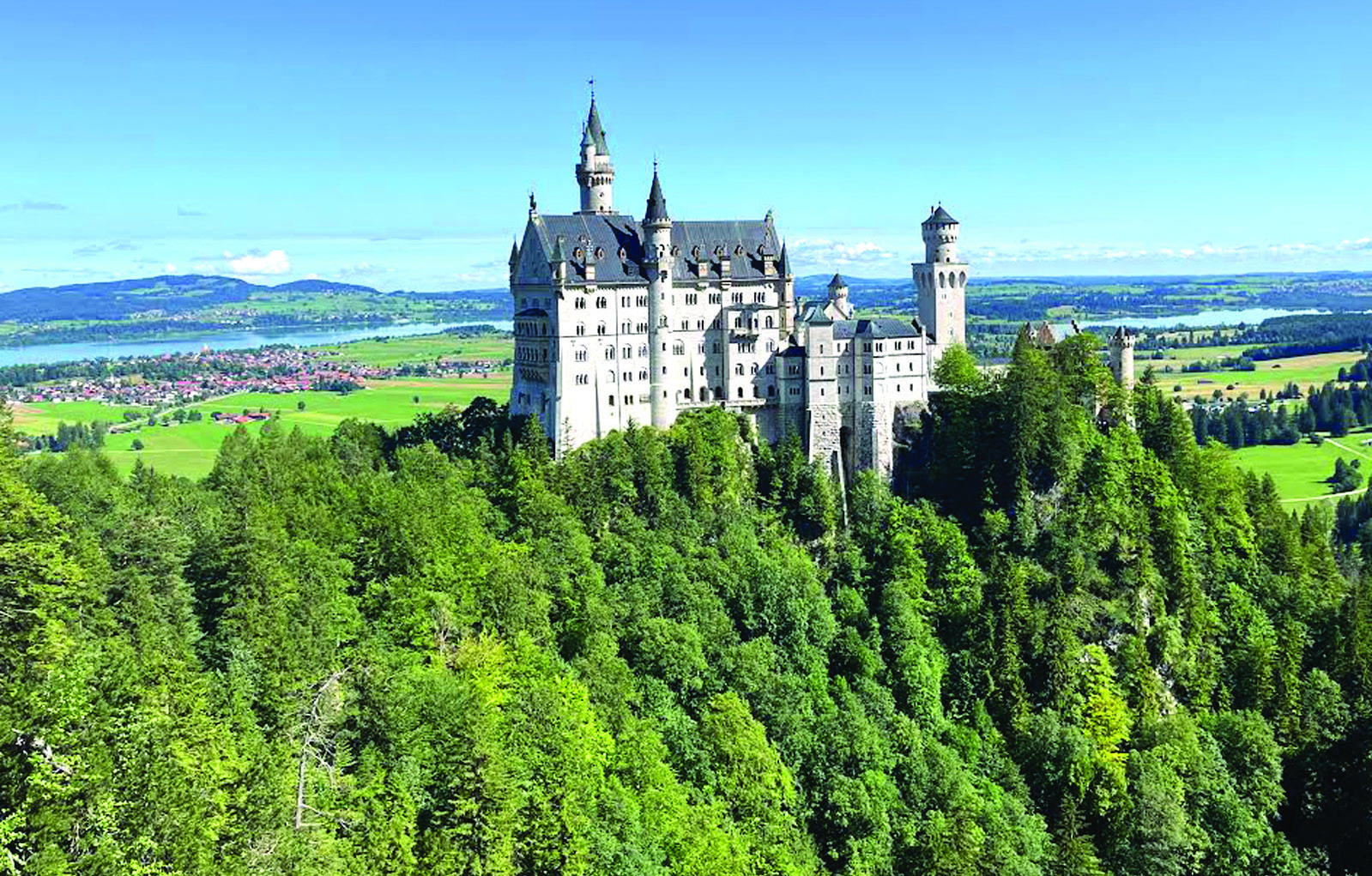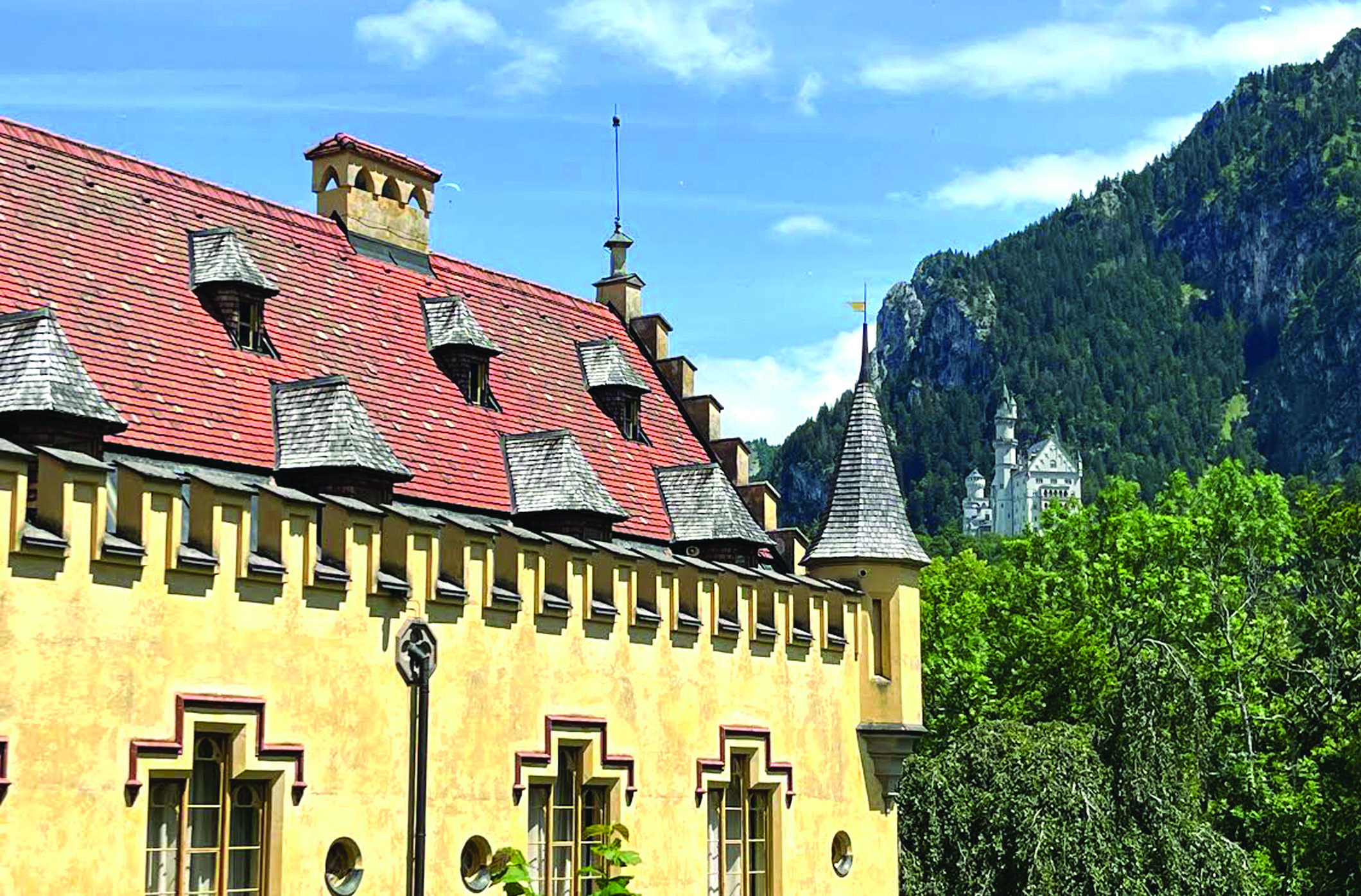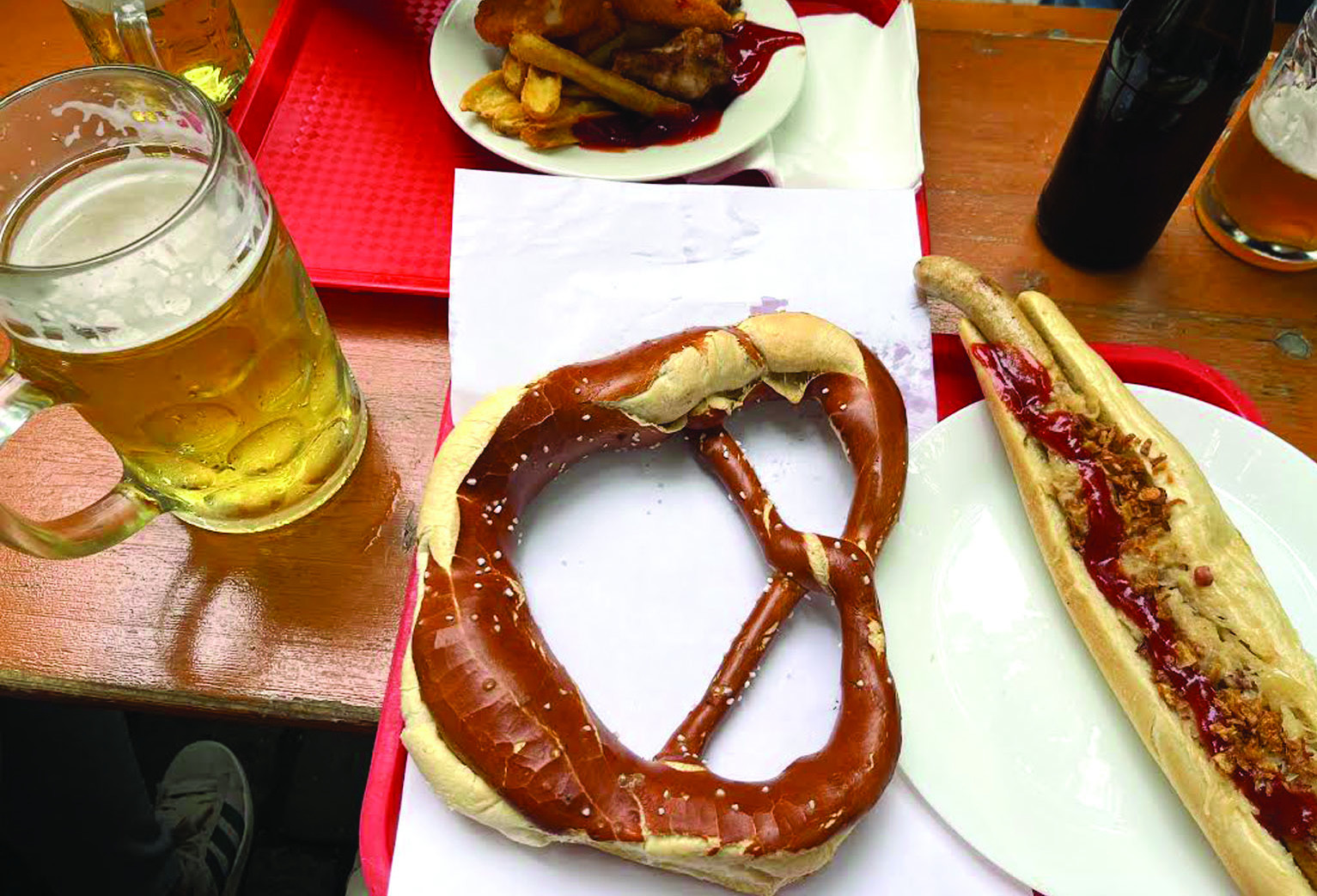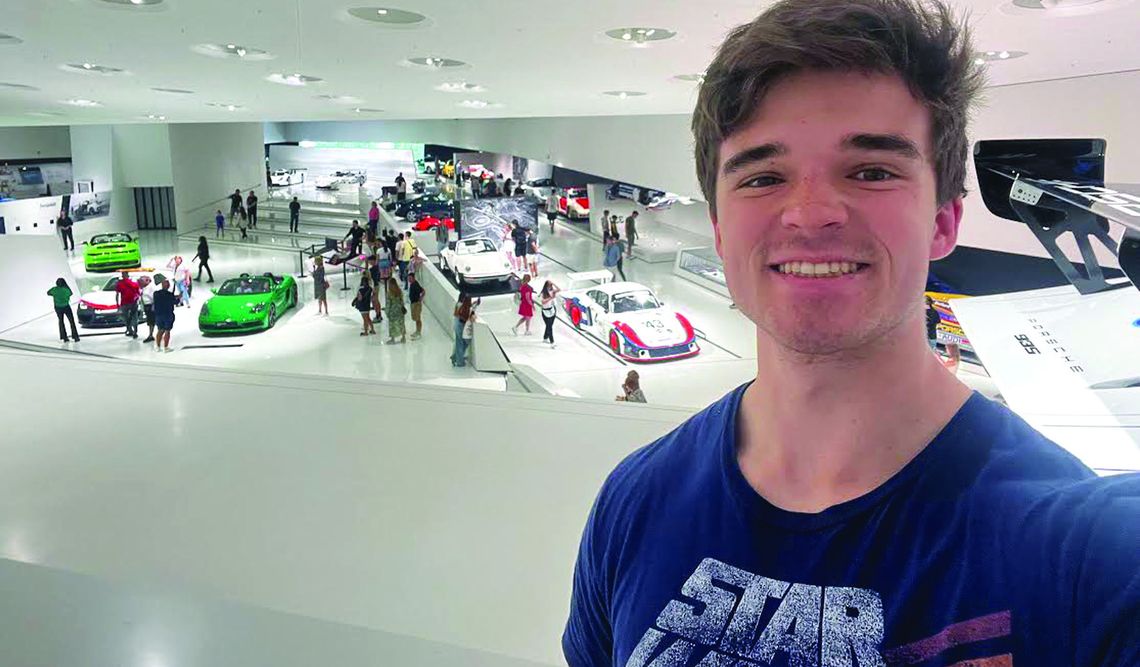Editor’s note: Welcome back to the second in a series of travel articles by Chas Chappell, a senior at Washington and Lee University. As we explained when we published the first story Sept. 4, Chas attended Oxford University for six weeks this summer to study English. As a budding travel writer, he also took time to write about some of his experiences as he explored several other countries in Europe on a budget. He has also produced videos to go along with these stories. You can find a link to the video that accompanies this story with the story posted on our website.
Europe On A Budget/ part 2
Clinging to the taxi cab’s door handle, I prayed the driver would slow down enough for me to slip out and bolt towards my hotel. He’d locked up my bag in the trunk and wouldn’t let me go till I gave him cash I didn’t have. Our small talk about his extensive MMA (Mixed Martial Arts) training took on a new, menacing light as we pulled to a stop.
This not-so-pleasant experience, which I’ll come back to later, bookended what was a wonderful weekend in Munich and southern Germany. I had a four-day weekend halfway through my program at Oxford University in England. I invited my family – my mom Lee, my dad Chuck and my sister Cate – to join the excursion.
We flew from London to Frankfurt instead of Munich. Frankfurt has one of the world’s biggest airports, making it a cheaper starting point for any German vacation. It’s got trains priced in the double digits to pretty much anywhere in the country. We boarded a Munich-bound train, but our first stop was the city of Stuttgart.
Stuttgart, home to both Porsche and Mercedez-Benz, is one of Europe’s biggest hubs for the auto industry. Its single biggest attraction is the Porsche Museum, a futuristic space that walks you through every major car they’ve produced since their first horseless carriage. It’s a mecca for car enthusiasts like my sister Cate, an aspiring mechanic who could’ve spent hours examining the Formula 1 racers and trying the array of interactive exhibits. We eventually pulled her away to ride the train the rest of the way into Munich.
Munich dates back to 1158 as the capital of Bavaria, which was a kingdom and is now both a region of Germany and a very tasty type of cream. The city wears its history on its sleeve – one minute you’re walking by a McDonald’s and the next you’re passing under Karlstor Gate, a piece of Munich’s original medieval defense wall.
There are tons of ways to engage with Munich without spending too much money. Our first stop in Munich was a free organ concert at St. Michael’s Church. The cavernous venue had perfect acoustics for the epic performance.
The next day began with a visit to the most somber, powerful stop of the trip: The Dachau Concentration Camp. Just 40 minutes from Munich by train, Dachau was the site of 4,000 deaths each month during the Holocaust of World War II. Its museums, set up inside the cells and slave workstations of prisoners, tell the story of a Nazi genocide aimed at anyone who was of Jewish descent or deviant in any way from Hiter’s ideal ethnic profile. Some rooms in Dachau are reappropriated to showcase art made in memory of the countless lives lost.
Use discretion when visiting Dachau. Walking through the gas chambers or anywhere near its grounds is an overwhelming experience that demands respect. It’s an important part of Germany’s history that can’t be ignored or whitewashed.
There’s also plenty of German culture well worth celebrating. And that’s exactly what we did on our next stop: a traditional German biergarten. The outdoor, tree-covered square was packed with vendors selling fresh sausage, pretzels and, of course, beer by the liter. Waitresses in traditional garb, “Dirdnl,” hurried to and fro sporting five mugs in each hand. There’s also live music, which just manages to rise above the sea of chatter.
Getting seated was mayhem – don’t expect to eat without sharing your table with strangers. I got a 1.50 euro Radler, which is beer mixed with lemonade, alongside a bratwurst and a pretzel bigger than my head! All told, my decently-sized meal set me back about $12, about average for an authentic biergarten experience.
After lunch, we went over to Alte Pinakothek, one of Europe’s most famous art museums It’s got paintings as old as the 1300s. The $10 ticket gives you access to room after room of floor-to-ceiling art. Some pieces are over 20 feet tall!
For dinner that night, my American curiosity got the best of me and I decided to check out German McDonald’s. I’m surprised to say I’d definitely recommend. The big difference was the full-fledged bakery they had on the top of the three-story restaurant. You could get a slice of New York Cheesecake, or go more German and get a piece of Erdbeerkuchen, a type of strawberry cake. Don’t overdo the fast food in Europe, but don’t underestimate the cultural value of visiting familiar favorites abroad.
We got up early the next day to train out to the German Alps and the town of Schwangau, home to Neuschwanstein and Hohenschwangau, two gorgeous castles nestled on the mountainsides. Train tickets are $30, and tickets for audio tours of the castles are $17 each, and it’s well worth it.
Neuschwanstein is one of the most beautiful buildings I’ve ever seen. You can get great views of it from a short trail near the bus station. Make sure to be early for your interior tour slot, because they’re not forgiving to latecomers. The 1800s castle is stunning inside. I tried to snag pictures of the gorgeous throne rooms and bedchambers, all inspired by King Ludwig II of Bavaria’s love of classic fairytales and Norse myths. But the wildest part of the castle? It was never used. King Ludwig II died before it was completed, the throne room without a throne.



Ludwig grew up across the valley in the 1100s-era Hohenschwangau Castle. It’s a steep climb to reach, but still worth it even if you don’t go inside because of the gorgeous, expansive gardens that offer views of the village, mountains and lakes below. The castle itself is beautiful but small on the inside. My favorite parts were the telescopes where Ludwig watched Neuschwanstein’s construction and a 200-year-old (probably stale) loaf of bread.
What better way to end a day near the Alps than by climbing them? We didn’t have time to ascend on foot, so we took the Tegelberg, a high-speed cable car, to the top, taking in the epic views along the way.
You can take the Tegelberg back down, but if you’re feeling adventurous you can jump off. Paraglide, I mean, for $200. If you’re looking for something more tame but still fun, the Tegelberg park has tons of trails leading to the summit. We didn’t have time to get that far, but we did nearly cross into Austria on the way up. The view was indescribable. I compared it to the Rockies, but there’s something else to the Alps that needs to be seen to be believed.
Exhausted and happy, I rested up for what I thought would be my final day in Munich. We knocked a few final sights off the list, all of which are free to visit. First, to Marienplatz, the most gorgeous square in Munich because of the 1800sera New City Hall. Every few hours, its tower plays a 10-minute-long bell and carousel show – times vary by day.
Next, we went to visit the Wittelsbach Gardens. The Wittelsbachs were the ruling family of Bavaria since the 1000s, so they kept a very large, well-managed and beautiful plot of gardens that are free to wander around. There’s a central dome that’s almost always got a street musician. I sat and took in the ambiance before moving on to a Munich site that’s been viral on social media lately: the Eisbachwelle, or Standing Wave.
It’s exactly what it sounds like: A constant surfable wave in a river created by placing 8-foot-tall stones in the riverbed. Urban surfers take turns seeing how long they can last before the wave takes them downstream. It’s not recommended to jump in, but many locals of all ages do anyway.
Our final stop of the trip was a visit to Munich’s most famous beer hall, Hofbrauhaus! It’s a 1600s-era restaurant with amazing German folk music that serves traditional Bavarian cheeses, sausage and, yes, beer! It was a perfect conclusion to the trip, and I headed to the airport happy… until my flight back to London was cancelled.
So began the nightmare. Lufthansa instructed the entire plane to head to a “service desk” 20 gates away. It was an all-out sprint to hopefully get out of Munich the same night. A grown man pushed between a mother and son – absolute pandemonium. I ended up being No. 134 in the queue, sitting for hours waiting to be seen.
In line, I got an e-mail saying I’d been rebooked to 7:20 a.m. … the day after next. I overheard a serviceperson whisper that nearly every airport hotel had been booked, while still claiming they could get people into hotels. I hurriedly booked my own flight for the next day and a hotel – most of the other passengers slept in the airport that night.
Charged an exorbitant $280 for one night, I went to look for a taxi. I was greeted by a middle-aged Turkish man who warmly greeted me, put my bag in the trunk and told me he took card after I informed him I didn’t have cash.
We made small talk about solo travel, which is when he told me all about his month of MMA training in Thailand. He said he’d “fought with the best.” This took on a different meaning when we arrived at the hotel and he told me his card reader wasn’t working.
“You’ll give me cash,” he said. I told him, as before, I was cashless. I attempted to get out and get my bag, but he clicked the trunk shut before I could do anything. “You’ll give me cash,” he repeated, and we took off into suburban Munich looking for an ATM. After a nerve-wracking 15 minutes of driving, we found one. “Get out and grab cash,” he said. I got the euros, paid him off, and finally got into the hotel.
After a long next day at the Munich airport, I arrived back in London. Despite a wild ending, my trip to Munich was exciting, illuminating, joyful and powerful all at once. Thank you for joining me on this wild ride – be sure to check out my final adventures through Italy and Ireland in the coming weeks. Until then, this i s Chas in Europe, signing off!



